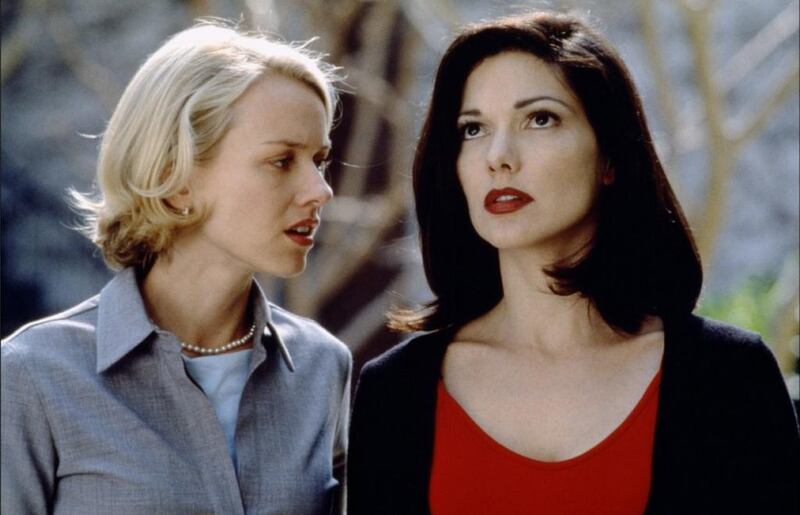David Lynch's 2001 American surrealist masterpiece, Mulholland Drive, was recently named best film of the 21st century in a BBC survey of 177 film critics from 36 countries. But despite its increasing acclaim, it remains widely misunderstood.
It is still often regarded as muddled, even by many who acknowledge the painterly composition of each frame, technical mastery and deft use of sound. Far from being an incoherent “mood piece” reliant on atmospherics, it is in fact structured with clockwork-like precision.
Mulholland Drive's narrative can be confusing not because its deliberately disjointed storylines resist reassembly into a clear plot. Instead, its component parts can be successfully reassembled as telling a number of different stories depending on how they are linked together and which aspects are privileged.
The film is a mystery/thriller that toys with our need for meaning. It forces viewers to become detectives, uncovering these meanings in a maze of clues, and thereby interrogates the essence of cinematic desire.
At its core, an aspiring actress apparently hires a hitman to murder her estranged girlfriend after she has been humiliated at a party at which this ex announces that she will marry a famous director. Like its main influences, The Wizard of Oz and Vertigo, Mulholland Drive is told through two storylines that refract and inform each other with actors playing various characters who may or may not be the same.
The first narrative is often seen as a dream, but is probably better understood as utopian (at least for the character Betty, played by Naomi Watts), while the second arc is usually misconstrued as reality but probably better conceptualised as dystopian.
However, from the perspective of the film director character, played by Justin Theroux, this utopian-dystopian dichotomy is reversed. For him the first storyline is a nightmare and the second a wish-fulfilment fantasy. He is uniquely the same character in both storylines, providing a crucial reference point.
Lynch further confuses viewers with a red herring.
In the two main storylines, Watts and Laura Harring play characters who, although different in personality, look similar. Viewers are invited to assume these characters are essentially the same people.
However, Watts’s character Diane is probably better compared to Harring’s mysterious and beautiful brunette Rita. The temptation to see Betty and Diane as versions of the same personality, because both are played by Watts, is another ruse.
Here's an example of how the two parts of Mulholland Drive can inform each other.
In the first storyline, two mafiosi order the director to cast an actress of their choice, introducing the film’s haunting catchphrase: “This is the girl.” One gangster then disgustedly spits out coffee, while the other screams: “Help me!”
This appears inexplicable. But the second storyline offers an unexpected context and interpretation. Diane experiences the engagement party as theatrically staged to maximise her humiliation. As her heartbreak, rage and existential nausea reach fever pitch, she looks down at some coffee she is trying to choke back.
The mug’s design features a circle flanked by two squiggles, spelling out “SOS” (the universal cry for help at sea). As her tears flow, Diane looks up, only to see the actor who played the gangster who spat out coffee.
The mobsters’ extraordinary behaviour – including their extreme aggression towards Diane’s hated rival, Adam – can thus be read backwards as a codified enactment of her psychological state at the moment she decided to murder her former lover. (She later tells the hitman: “This is the girl.”)
The nature of all these scenes is determined by which character’s perspective is privileged. Confronting the mobsters is a disaster for Adam, but he is triumphant at the party scene that provokes murderous outrage in Diane – and vice versa.
Lynch’s architectural achievement is even more extraordinary since most of the first storyline was filmed as a pilot for a television series that was rejected, while the rest of the film was shot more than a year later, after the whole project was reconceptualised as a stand-alone film.
Such a production history could excuse the kind of narrative incoherence many falsely associate with Mulholland Drive, and actually does belong to Lynch's next film, Inland Empire. Yet somehow, in Mulholland Drive Lynch crafted a complex, flexible cinematic structure whose component parts can be read with or against each other to produce strikingly different, yet fully functional, narratives.
Lynch famously never comments on the substance in his films. With Mulholland Drive, that silence is particularly effective since the viewer can play with its different parts like a child working with a pile of Lego.
No other film of the 21st, and arguably even the 20th, centuries requires or rewards this level of audience engagement.
Hussein Ibish is a senior resident scholar at the Arab Gulf States Institute in Washington and a film buff
On Twitter: @ibishblog





